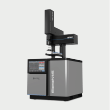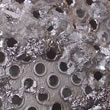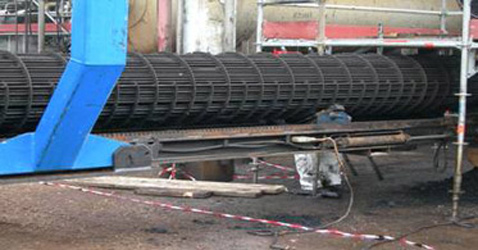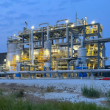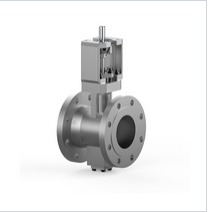Jan-2018
Wastewater treatment for challenging crudes
A new organic polymer treatment has enabled refiners to more effectively process a variety of opportunity crudes
JAMES KIOLBASSA
Baker Hughes, a GE Company
Viewed : 7476
Article Summary
Many refiners have the opportunity to purchase challenging crudes at discount pricing. Unfortunately, processing these crudes often leads to additional problems in the wastewater treatment plant (WWTP).
In WWTPs, these opportunity crudes bring increased concentrations of contaminants such as oil entrained solids and heavy metals that create new bottlenecks. For instance, up to half of the total solids entering WWTPs from these crudes can be less than 0.45μ in size. The larger solids tend to deposit in storage tanks while the smaller particles tend to stabilise emulsions.
Surfactant based chemistries added during production to combat corrosion and flow assurance concerns also create processing challenges, as they tend to further stabilise emulsions in the WWTP and increase the required dosage of emulsion breaking chemicals. In addition, the presence of amine based H2S scavengers to crudes can increase the tendency for upsets in the biological plant.
The chemistries and technologies that achieved effective liquids/solids separation just a few years ago are now having their own issues treating these challenging WWTP streams. Treatment programmes incorporating polymers and inorganic aluminum salts can break the emulsions, but only at much higher dosages than are required for treating light crudes. The inorganic products add to the processing challenges by increasing the metals content in the wastewater streams and helping to generate greater volumes of water laden sludge.
Processing challenging crudes complicates treatment and increases the tendency for a refinery to exceed its regulated effluent limits. As a result, refiners are increasingly threatened with the risks of increased environmental regulatory fines, negative impact on the environment, elevated costs from diminished wastewater system performance, depressed revenue from lower plant throughput, or even refinery shutdowns.
A multifunctional solution
Realising the need for a new water treatment solution to address these challenges, Baker Hughes, a GE company (BHGE), developed the Spectraclear treatment technology. A group of cationically charged organic polymers, these products can function as a coagulant, emulsion breaker or flocculant to treat challenging emulsions in desalter brine, oily water streams, dissolved air flotation (DAF) influent and slop oil, all without the side effects typical of conventional chemistries.
The new organic polymers exhibit reverse emulsion breaking for different emulsion types – oil in water emulsions, synthetic lubricants, surfactants – and clarify wastewater by removing both hydrocarbons and solids. Because they contain little to no metals, the polymers are effective within a wide pH operating window (typically from 4.0 to 9.0) and help reduce the amount of inorganic salts added to the wastewater stream. This is particularly beneficial to those refineries tasked with meeting stringent effluent permit requirements.
The new polymers are formulated to improve wastewater separation performance in cold waters down to 36°F (2°C). In addition, they are less corrosive than coagulants containing metal salts of aluminum and iron. Unlike chloride based inorganic chemistries, the new technology is compatible with stainless steel chemical feed systems.
Spectraclear products are biodegradable and free of polyacrylamide, polydiallyldimethylammonium chloride (DADMAC), formaldehyde, epichlorohydrin, polyamine and other species that might be toxic to the environment. The products are available in a ready to pump liquid form, which avoids the need for a polymer make-down system.
These new polymers were commercialised in 2017, and are used either as standalone products or as part of a programme designed to reduce the concentration of conventional chemistries. With each application, the products have demonstrated new operational benefits to the wastewater treatment system, as illustrated by the case studies below.
Reducing sludge volume
Recent changes to a North American refiner’s crude slate significantly increased the volume of hazardous sludge generated in a number of processing units, most notably the DAF units. Looking for an economical solution to reduce the amount of sludge being generated on-site, the refiner turned to BHGE for assistance.
Simulation testing was conducted with various Spectraclear formulations. While traditional aluminum based coagulant programmes such as aluminum chlorohydrate, polyaluminum chloride and aluminum produce voluminous flocs that retain water in the sludge, the new organic polymers have been shown to produce tight floc formations. These products condition the sludge so that it entraps less water, thus resulting in less sludge.
On-site jar testing investigated the new polymer’s ability to reduce sludge volumes compared with a traditional inorganic treatment programme. The following is a detailed description of the jars in Figure 1:
• Left jar: at a typical dosage rate, the conventional chemistry was insufficient, resulting in a turbidity value of 73 Nephelometric Turbidity Unit (NTU)
• Middle jar: doubling the conventional treatment dosage in a second jar dropped the turbidity to 8 NTU but left a significant volume of sludge at the top
• Right jar: the wastewater sample was pretreated with the new organic polymer prior to adding the conventional chemistry. The pretreatment had the effect of maintaining low turbidity (12 NTU). Significantly less sludge was generated in this jar.
Encouraged by these findings, the refiner conducted a 40-day trial in a DAF unit to determine whether augmenting the traditional treatment programme with the organic polymer could reduce the amount of hazardous sludge. The polymer was added to the wastewater as a pretreatment charge conditioner prior to entering the DAF.
Before the start of the trial, the DAF produced sludge at a rate of 4.23 gallons per minute (gpm) with the traditional chemistry alone. The addition of the new organic polymer treatment helped create a tight floc that held less water. As a result, the DAF sludge rate dropped to 1.65 gpm, a 61% reduction in the volume of hazardous sludge generated.
The new treatment decreased the sludge volume by producing a tighter floc that held less water, while reducing the ancillary waste disposal costs. The lower sludge volumes resulted in reduced corrosion potential in the crude tower overheads, less frequent vacuum truck transports, and a need for fewer sludge holding tanks in the field.
Lowering chemical usage
A refiner set a goal to significantly reduce its total chemical usage and spend. Traditionally, a conventional chemical treatment was fed ahead of the DAFs at a low dosage that was sufficient to break the emulsion and float oily solids for removal. Due to a change in crude slate, however, this dosage could not obtain the turbidity target of less than 50 NTU in the DAF effluent. The refiner initially attempted to solve this challenge by doubling the dosage of the incumbent chemistry, which essentially doubled the treatment costs.
Add your rating:
Current Rating: 4








